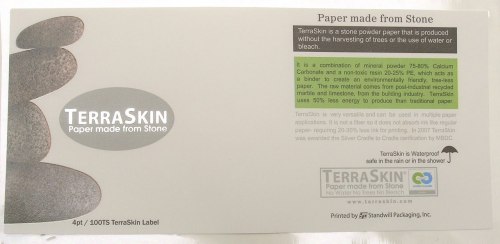A bit of a focus on Green Design
written by visual artist Janet Botes
While doing some online research for my studies in 2006 I came across Celery Design Collaborative, based in Berkeley in the US. On a recent search for this Design company I found that 5 years later they're still going strong. With updated branding and some outputs or "eco tools" from their efforts in creating and supporting sustainable design they're a great example or role model for other design and publishing companies. One of the outputs is a Sustainability Score Card that gives a good overview of what options to favor when choosing paper, plastic, ink and binding methods for your next creative or publishing project. Check it out at celerydesign.com//images/uploads/Celery_SustainScore_11.08_.pdf. Looking at paper, they have also created an ecological Guide to Paper. Go and read more about paper processes and how to choose your paper at www.celerydesign.com/ecological-guide-to-paper
Another output is a book published in 2009, Green Graphic Design, by Brian Dougherty. Check it out at www.greengraphicdesign.net. According to Jade-Snow Carroll of the Design Observer, it is a "great resource for designers wanting to practice their craft sustainably".
On the same track there is a fresh, new and local company to keep an eye on... Paper People Publishing Collective, based in Johannesburg. As a book arts network and a publishing house they encourage all their authors to print on recycled materials, and are developing solutions for hand-printed and hand-bound books from Studio 6 at the Newtown Artist-Run Centre.
As a general guideline, when choosing your paper, try choose paper that are approved by the FSC (Forest Stewardship Council), tree-free paper or recycled paper.
When choosing your recycled paper also consider the percentage of waste used, and the amount of chlorine used to whiten or brighten the post consumer waste paper used in the production of the paper. And how about hemp paper? From what I hear things are looking good for the possibility of having industrial hemp legalized in our country! Industrial hemp is not from the same strain of plants that can be smoked, and as hemp grows much quicker and with less water than cotton it is a great raw material for use in the clothing industry, building industry and, of course, for paper. Another new option is stone paper, have a look at the post we published about Stone Paper: greenyourart.blogspot.com/2013/02/stone-paper-is-writing-on-wall.html
When looking at ink, suggest to your printers that they use vegetable-based inks and low-VOC solvents. And from what I've read, don’t use a printer that uses isopropyl alcohol. Generally, as with all materials and products, try to avoid inks with toxic chemicals.
When delivering and packaging your books, brochures and other designed materials for your clients, don’t wrap them in plastic, but pack them in re-usable, recycled or re-used packages. Also tell buyers to recycle or re-use all packaging and containers as far as possible.
Together all the small changes and effort we make makes a big difference.
Showing posts with label paper. Show all posts
Showing posts with label paper. Show all posts
Wednesday, April 17, 2013
Wednesday, February 6, 2013
Stone Paper - is the writing on the wall?
 |
ZHANG JIANJUNExistence Series, 1989
Acrylic, Chinese ink, Xuan paper, wood, stone, paper mache on canvas
|
“stone papers” contain 80% Calcium Carbonate (basically pulverized marble or limestone) and 20% High Density Polyethylene (HDPE—the same plastic that’s used in milk jugs and plastic bags).
 |
| Source: Tumblr |
While there's not yet a lot of reviews about the paper, and whether it's really as environmentally friendly as it claims to be, it seems to be a good option when you look at the water consumption and energy savings in its production. They are said to use no water, no toxic chemical bleaches and use far less energy. They are recyclable as well. (Read more)
 |
| From the Sketchy Musings Blog |
I have also read that the paper is made from the waste product in quarries from the building and construction industry. If this is the case, and if the sludge from mining dumps could also be used, then this paper has my vote.
Read up, find out and speak up! What do you think - is this tree free paper a wonderful new innovation or just another gimmick tapping into a green consumerism market? Leave a comment, or email your thoughts to artlovenature@gmail.com
 |
| Source |
Subscribe to:
Posts (Atom)



